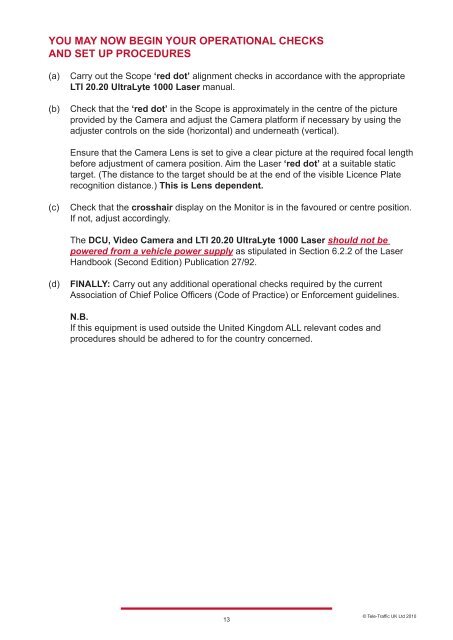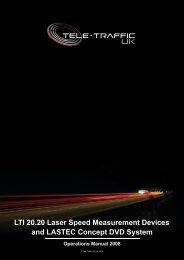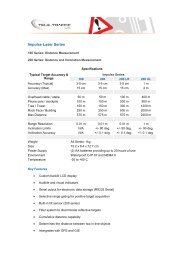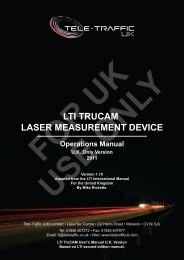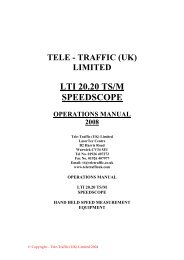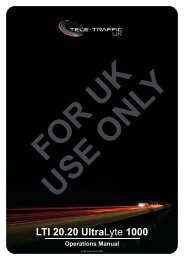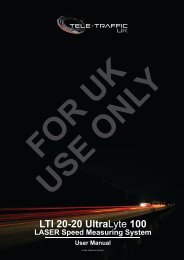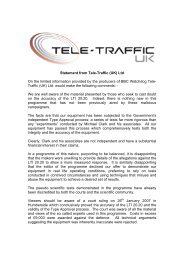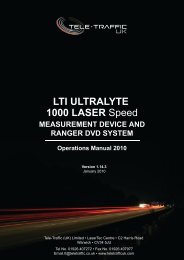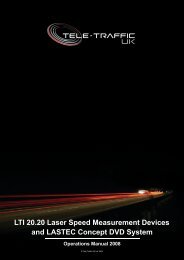Create successful ePaper yourself
Turn your PDF publications into a flip-book with our unique Google optimized e-Paper software.
YOU MAY NOW BEGIN YOUR OPERATIONAL CHECKS<br />
AND SET UP PROCEDURES<br />
(a) Carry out the Scope ‘red dot’ alignment checks in accordance with the appropriate<br />
LTI 20.20 UltraLyte 1000 Laser manual.<br />
(b) Check that the ‘red dot’ in the Scope is approximately in the centre of the picture<br />
provided by the Camera and adjust the Camera platform if necessary by using the<br />
adjuster controls on the side (horizontal) and underneath (vertical).<br />
Ensure that the Camera Lens is set to give a clear picture at the required focal length<br />
before adjustment of camera position. Aim the Laser ‘red dot’ at a suitable static<br />
target. (The distance to the target should be at the end of the visible Licence Plate<br />
recognition distance.) This is Lens dependent.<br />
(c) Check that the crosshair display on the Monitor is in the favoured or centre position.<br />
If not, adjust accordingly.<br />
The DCU, Video Camera and LTI 20.20 UltraLyte 1000 Laser should not be<br />
powered from a vehicle power supply as stipulated in Section 6.2.2 of the Laser<br />
Handbook (Second Edition) Publication 27/92.<br />
(d) FINALLY: Carry out any additional operational checks required by the current<br />
Association of Chief Police Officers (Code of Practice) or Enforcement guidelines.<br />
N.B.<br />
If this equipment is used outside the United Kingdom ALL relevant codes and<br />
procedures should be adhered to for the country concerned.<br />
13<br />
© <strong>Tele</strong>-<strong>Traffic</strong> UK Ltd 2010


